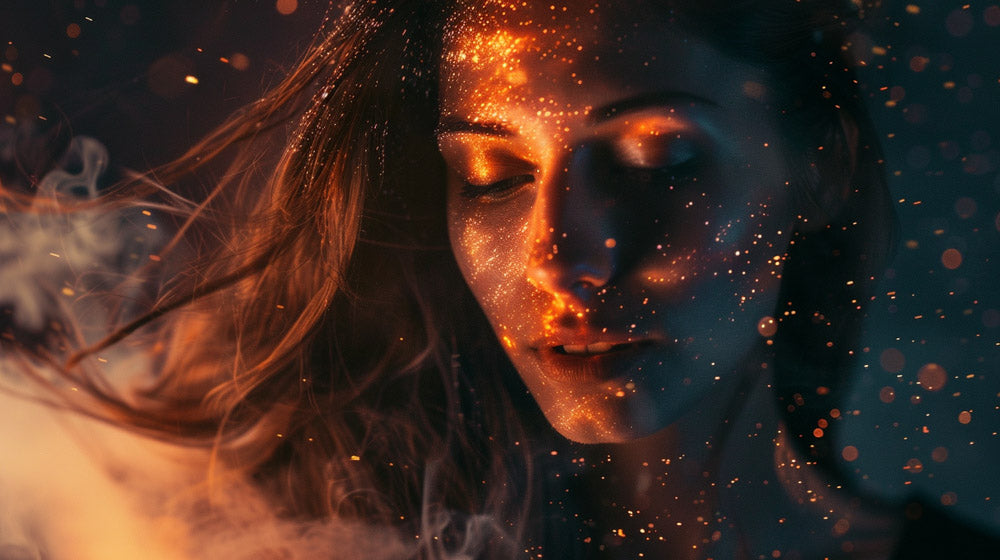Qu'est-ce que le triangle d'exposition ?
Le triangle d'exposition explique la relation entre trois éléments essentiels : la vitesse d'obturation, l'ouverture et l'ISO. Ces composants fonctionnent ensemble pour contrôler la quantité de lumière qui atteint le capteur de l'appareil photo, influençant ainsi l'exposition et l'aspect général de la photographie.
[Image du lieu : Illustration du triangle d'exposition]
Vitesse d'obturation
La vitesse d'obturation détermine la durée pendant laquelle l'obturateur de l'appareil photo reste ouvert, permettant à la lumière d'atteindre le capteur. Elle est mesurée en fractions de seconde, par exemple 1/250 ou 1/60. Une vitesse d'obturation rapide peut figer le mouvement, tandis qu'une vitesse d'obturation lente peut créer un flou de mouvement, ajoutant une sensation de mouvement à l'image.
Exemple:
- Vitesse d'obturation rapide : 1/1000 - Idéal pour capturer des sujets en mouvement rapide comme des sports ou des animaux sauvages.
- Vitesse d'obturation lente : 1/30 - Idéal pour les conditions de faible luminosité ou pour créer des effets de flou artistiques.
L'IA générative peut simuler différentes vitesses d'obturation pour visualiser l'impact de différents paramètres sur vos photos. En saisissant des descripteurs tels que « obturation rapide » ou « flou de mouvement », les outils d'IA peuvent générer des images qui illustrent ces effets.
[Image de lieu : exemple de vitesse d'obturation rapide (par exemple, une photo de sport)]
[Image de lieu : exemple de vitesse d'obturation lente (par exemple, une scène de rue nocturne avec un flou de mouvement)]
Ouverture
L'ouverture fait référence à la taille de l'ouverture de l'objectif par laquelle la lumière entre. Elle est mesurée en diaphragmes (par exemple, f/2,8, f/5,6). Une ouverture plus grande (un nombre de diaphragmes plus petit) laisse entrer plus de lumière et crée une faible profondeur de champ, ce qui rend l'arrière-plan flou. À l'inverse, une ouverture plus petite (un nombre de diaphragmes plus grand) laisse entrer moins de lumière et augmente la profondeur de champ, ce qui permet de garder une plus grande partie de la scène nette.
Exemple:
- Grande ouverture (f/2,8) : Excellent pour les portraits avec des arrière-plans flous.
- Petite ouverture (f/16) : convient à la photographie de paysage où vous souhaitez que tout soit net.
Grâce à l'IA générative, vous pouvez découvrir comment différents paramètres d'ouverture affectent la profondeur de champ et l'exposition. Des descripteurs tels que « faible profondeur de champ » ou « mise au point profonde » aident l'IA à générer des images comparatives.
[Image de lieu : exemple de grande ouverture (par exemple, un portrait avec un arrière-plan flou)]
[Image de lieu : exemple de petite ouverture (par exemple, une photo de paysage avec tout en mise au point)]
ISO
L'ISO mesure la sensibilité du capteur de l'appareil photo à la lumière. Des valeurs ISO plus faibles (par exemple, 100) sont utilisées dans des conditions de forte luminosité pour maintenir la qualité de l'image, tandis que des valeurs ISO plus élevées (par exemple, 3200) sont nécessaires dans des situations de faible luminosité mais peuvent introduire du bruit ou du grain dans la photo.
Exemple:
- Faible ISO (100) : Idéal pour les prises de vue extérieures ensoleillées.
- ISO élevé (3200) : utile pour la photographie en intérieur ou de nuit, mais attention au bruit accru.
L'IA générative peut illustrer l'impact des différents niveaux ISO sur la qualité de l'image. En spécifiant « ISO élevé » ou « ISO faible », les images générées par l'IA peuvent montrer les différences de bruit et de luminosité.
[Image de lieu : exemple de faible ISO (par exemple, une photo extérieure lumineuse)]
[Image de lieu : exemple d'ISO élevé (par exemple, une photo de nuit avec du bruit visible)]
Le côté artistique du triangle d'exposition
Comprendre le triangle d'exposition permet non seulement d'obtenir une exposition correcte, mais aussi de permettre aux photographes de faire des choix créatifs. Différentes combinaisons de vitesse d'obturation, d'ouverture et d'ISO peuvent considérablement modifier l'ambiance et le style d'une image. Par exemple, une faible vitesse d'obturation avec une ouverture étroite peut créer un aspect sombre et sous-exposé, tandis qu'un ISO élevé avec une grande ouverture peut donner lieu à une image lumineuse et à fort contraste.
L’IA générative joue un rôle essentiel dans l’expérimentation de ces choix créatifs. En saisissant des descripteurs spécifiques, l’IA peut générer des images qui reflètent divers styles et techniques artistiques, aidant ainsi les photographes à visualiser et à affiner leur vision créative.
[Image de lieu : comparaison des styles artistiques (par exemple, images sous-exposées et surexposées)]
Application pratique avec l'IA générative
Les outils d'IA générative, tels que ceux proposés par MidJourney, permettent aux photographes de saisir des paramètres et des descripteurs spécifiques pour voir comment différentes configurations du triangle d'exposition affecteront leurs images. Cette technologie fournit un bac à sable virtuel pour l'expérimentation, facilitant la compréhension et la maîtrise de l'interaction entre la vitesse d'obturation, l'ouverture et l'ISO.
Exemples d'invites pour les images générées par l'IA :
- « Portrait avec faible profondeur de champ, f/2,8, vitesse d'obturation rapide »
- "Paysage avec mise au point profonde, f/16, faible ISO"
- "Scène de nuit avec ISO élevé, vitesse d'obturation lente, flou de mouvement"
[Image de lieu : Exemples générés par l'IA basés sur des invites]
Conclusion
La maîtrise du triangle d'exposition est essentielle pour tout photographe souhaitant prendre le contrôle de son appareil photo et créer des images visuellement convaincantes. En comprenant et en expérimentant la vitesse d'obturation, l'ouverture et l'ISO, vous pouvez obtenir l'exposition et l'effet artistique souhaités. L'IA générative améliore ce processus d'apprentissage en fournissant un retour visuel immédiat, vous permettant d'explorer et d'affiner vos compétences en photographie.
Restez à l’écoute pour d’autres articles de notre série sur la maîtrise des fondamentaux de la photographie à l’aide de l’IA générative. Dans le prochain épisode, nous approfondirons les spécificités de la vitesse d’obturation et ses applications créatives.
Pour plus de conseils et de tutoriels sur la photographie, visitez notre blog sur les fondamentaux de la photographie .





















